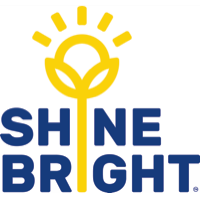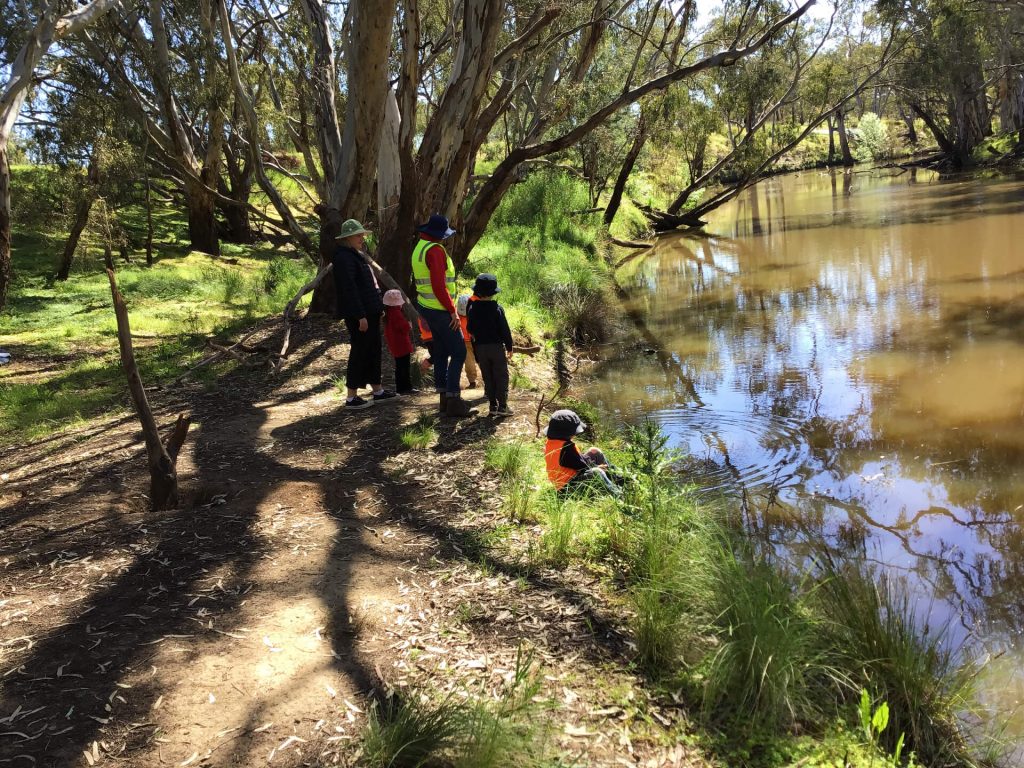Shine Bright teachers have been experimenting with other ways of writing and documenting their practice as part of the ECP3 project – Below is an example of this written by Elmore Kindergarten.
Each week I walk with the children to our river – Yerrin. I walk slowly to get there and I point out all the changes to be seen as we slowly observe and connect with DjaDja Wurrung country. I want the children to be slow too. To watch. To notice. To remember.
I notice changes and point them out. Birds. Trees. Wattle blooms. Sour grass flowers. The red gum nut fairy flowers that have fallen from the gum tree. The squiggly lines grubs make when they eat the bark of the tree. The yellow fungus that grows in bark after it rains.
Reece loves to fish. He watches Yerrin. He looks for the cod and the Redfin. He knows the names. He knows the shape and colour of the fish.
Reece and I decide we must go fishing. I take string and meat to river with us. I tie a string to the meat, one piece for each child. I ask the children to find a good strong, short fishing stick. Everyone scurries away. I tie the fishing sticks to the other end of the string.
Reece, is excited; he has been yabbying before. He shows his friends what to do. He shows the how to push the stick into the bank, how to swing the meat on the string and plop it gently in the water, so you can still see it. He shows how to make a loop of string on the bank so you can see when the string moves when a yabby grabs hold of it.
Reece’s knowledge is amazing. He is showing me a completely different Reece to the one I know away from Yerrin. A knowledgeable Reece, a serious ‘’get the job done’’ Reece.
We talk about how Yerrin has given fish to people for a long time. Since before, there were houses here. About how people camped here. Reece says it is a good spot.
Reece talks about the Murray – Dungala. His Pop’s farm is on the Murray. He camps and fishes with family there. He caught a big reddy there. I love the way he tells the story. It shows me how much he loves the river, how competent he feels here in this place.
Reece makes a camp fire out of sticks. For cooking the yabbies he says. He shows me how to choose a good place to sit and fish. Not too many snags in the water, he says. He glows as he shares his knowledge with other children.
Soon I see everyone is organised, has their string and their spot. The children and Reece in particular, become peaceful, grounded, thoughtful, observant, connected. There is barely a sound, except for the cockatoos screeching and the bawls of the cows away over the river watching us from Tungerenong land.
Then it happens, one of the strings moves. Reece notices first. He is intent. He holds up his hand to the others to be still, to pay attention, and to watch. It tugs a few times and everyone can see it. Excitement is building but still Reece says ‘just wait, shhh’. There are small ripples on the water. The yabbie is in sight. We can see his claws pulling at the meat. Nate pulls on the string and the yabbie is gone.
There is a cry of frustration. There is laughter too. I see Reece is even more intent. Children wander away from Yerrin, after setting up their string and loop. Reece stays. I sit with him in peace. Only a small amount on conversation takes place. He is watching river.
I learn so much about Reece. What else can I learn if I find just the right prompt?
What can yabbie teach us about river?
What can river teach us?
Who can we talk to learn more about the stories of this place?
What can we do to learn how to protect this place that we now consider is ours and value in a whole new way, because we visit and learn here?







wow that is so amasing, what a wonderful learning experience
This was so beautiful to read!
How lucky is Reece to be able to experience this at kinder, i loved reading this
This was such a lovely read- I could feel the peace and serenity